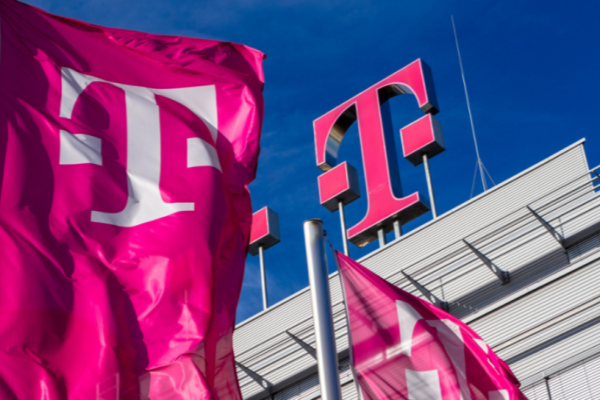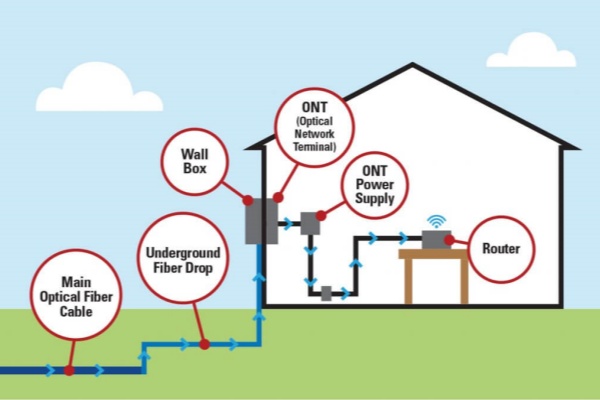Deutsche Telekom, one of the world’s largest telecommunications companies, is spearheading a transformative initiative to expand its fiber optic network across Germany. With operations spanning over 50 countries, the company has long been a leader in telecommunications innovation. In Germany, no other provider has matched Deutsche Telekom’s investment in expanding its fiber-optic infrastructure, which has become a critical backbone for high-speed internet and digital connectivity.

Pioneering Fiber-Optic Infrastructure
Deutsche Telekom’s commitment to building a robust fiber-optic network is evident in its extensive groundwork. The company has laid more than 750,000 kilometers of fiber-optic cable across Germany. This effort marks a significant upgrade to the country’s telecommunications infrastructure by phasing out the outdated copper wires that have served for over five decades. Fiber-optic cables, known for their superior data transmission capabilities, offer exponentially higher bandwidth and are essential for meeting the demands of a digital-first world.
Current Expansion Goals

In 2025, Deutsche Telekom’s focus remains on extending its fiber-optic network to reach more homes and businesses. The company has set an ambitious target to connect an additional 2.5 million homes to fiber optic lines within the year. This expansion is part of its long-term vision to provide fiber connectivity to at least 25 million homes across Germany by 2030. The scale of this project underscores Deutsche Telekom’s determination to establish Germany as a leader in digital infrastructure within Europe.
Simplifying the Transition from Copper to Fiber
Deutsche Telekom’s transition from copper to fiber optic lines not only represents a technological upgrade but also an opportunity to streamline its processes. The company aims to simplify fiber-optic deployment’s planning and installation stages to enhance the overall customer experience. This strategic approach includes:
- Optimized Planning Processes: Leveraging advanced mapping technologies and data analytics to identify high-priority areas for fiber deployment.
- Efficient Installation Techniques: Deploying innovative tools and methods to reduce installation time and disruption to local communities.
- Customer-Centric Solutions: Ensuring clear communication and support for customers transitioning to fiber, including tailored packages for businesses and households.
The Importance of Fiber Optic Expansion
The global demand for high-speed internet is at an all-time high, driven by increasing reliance on digital platforms for work, education, entertainment, and communication.

In this context, Deutsche Telekom’s fiber rollout holds significant importance for Germany’s digital economy:
- Boosting Economic Competitiveness: Fiber-optic infrastructure enables businesses to adopt cutting-edge technologies, such as cloud computing, AI, and IoT, enhancing productivity and innovation.
- Facilitating Remote Work and Learning: High-speed, reliable internet is crucial for remote work and online education, both of which have surged in demand post-pandemic.
- Supporting Urban and Rural Connectivity: Deutsche Telekom’s efforts aim to bridge the digital divide by bringing high-speed internet to underserved rural areas, fostering inclusivity and growth.
Overcoming Challenges in Fiber Deployment
While Deutsche Telekom’s vision is bold, the path to achieving it is not without challenges. Some of the primary hurdles include:
- High Deployment Costs: Laying fiber-optic cables involves substantial investment, particularly in sparsely populated or remote regions.
- Regulatory Barriers: Navigating local regulations and obtaining permits can delay project timelines.
- Customer Adoption: Encouraging customers to transition from copper to fiber networks requires effective communication and incentive programs.
Deutsche Telekom’s strategy to address these challenges involves forming partnerships with local governments, leveraging public-private initiatives, and investing in workforce training to ensure efficient implementation.
Environmental Benefits of Fiber Optics

Beyond its economic and technological advantages, the transition to fiber-optic networks also aligns with Deutsche Telekom’s sustainability goals. Fiber networks are more energy-efficient than copper, reducing the carbon footprint of data transmission. The company’s commitment to eco-friendly practices includes recycling copper materials from old networks and minimizing environmental impact during installation.
Milestones in Deutsche Telekom’s Fiber Journey
Over the years, Deutsche Telekom has achieved several significant milestones in its fiber-optic expansion:
- 2010-2020:Focused on pilot projects and initial rollouts in urban areas.
- 2021:Announced the goal of covering 10 million households with fiber by 2024.
- 2023:Surpassed 15 million fiber-optic connections nationwide, reflecting accelerated progress.
- 2025 Goal: Adding 2.5 million new connections, reinforcing its leadership in digital infrastructure.
The Road Ahead
As Deutsche Telekom accelerates its fiber rollout, the company is poised to play a central role in shaping Germany’s digital future. Deutsche Telekom is setting new benchmarks in the telecommunications industry by investing in cutting-edge technologies, simplifying installation processes, and prioritizing customer satisfaction.
The broader implications of this initiative extend beyond Germany, serving as a model for other nations aiming to enhance their digital infrastructure. With a clear vision and robust execution, Deutsche Telekom’s fiber expansion will drive connectivity and lay the groundwork for technological innovation and economic growth in the years to come.
Deutsche Telekom’s fiber rollout expansion is a testament to its commitment to building a connected and competitive Germany. By replacing outdated copper networks with state-of-the-art fiber-optic infrastructure, the company is addressing the evolving needs of consumers and businesses alike. With ambitious targets and a customer-centric approach, Deutsche Telekom’s efforts are set to transform the country’s digital landscape, paving the way for a future defined by seamless connectivity and innovation.
